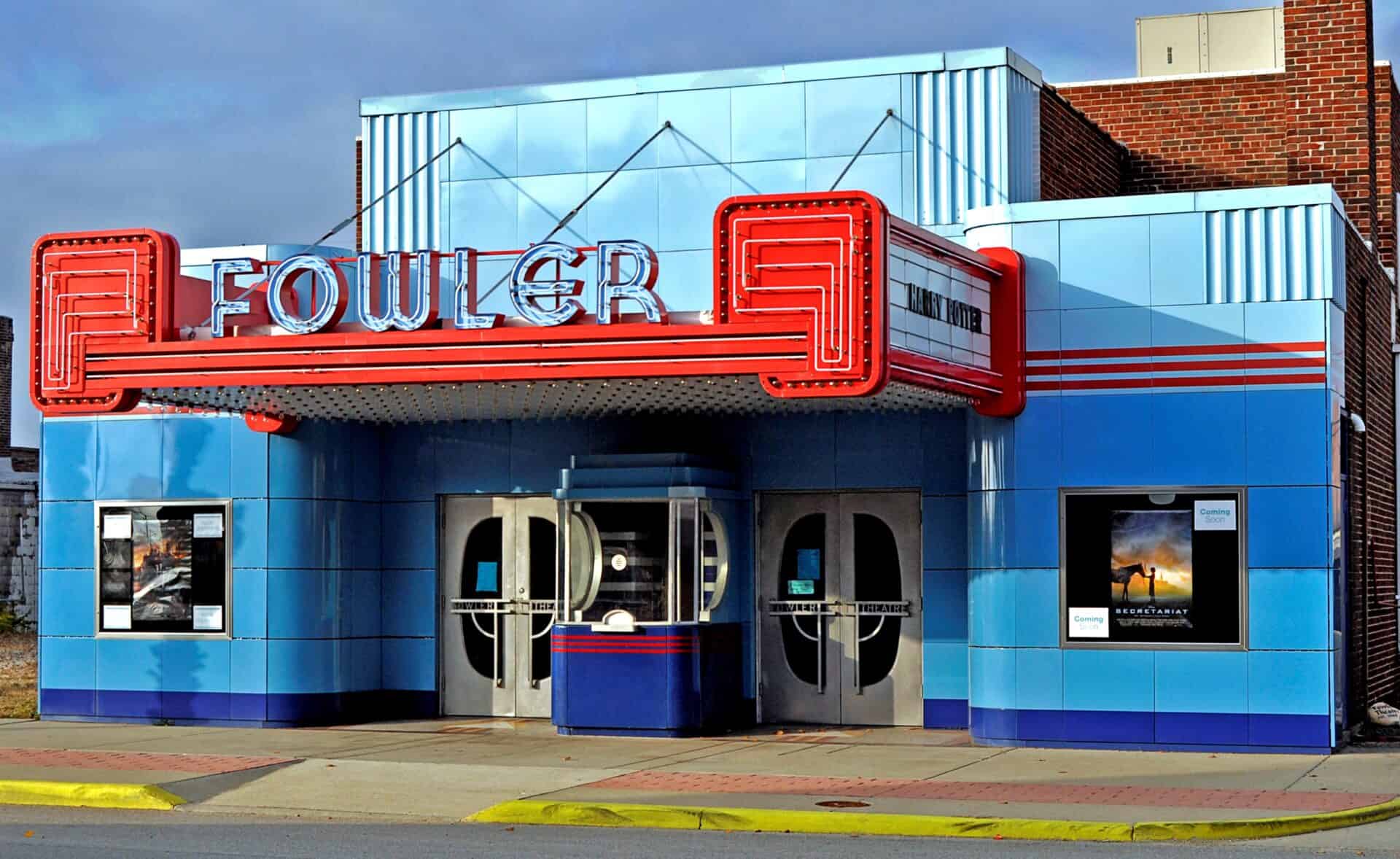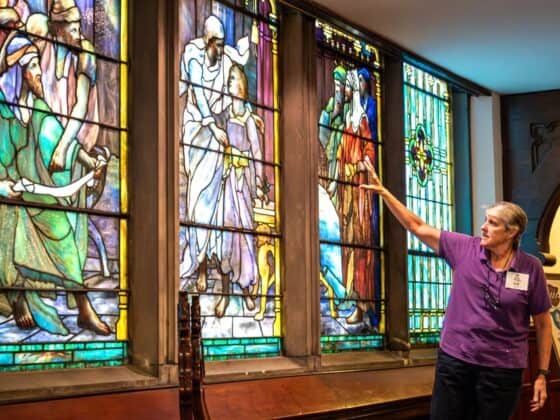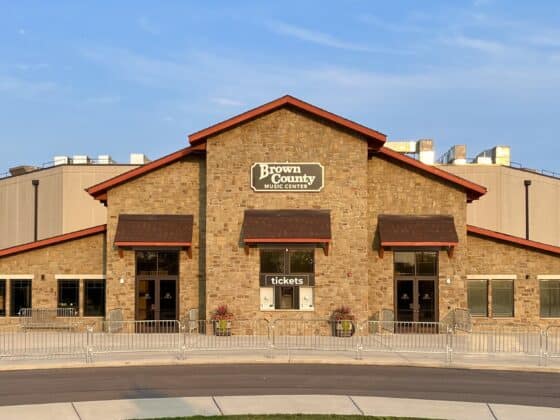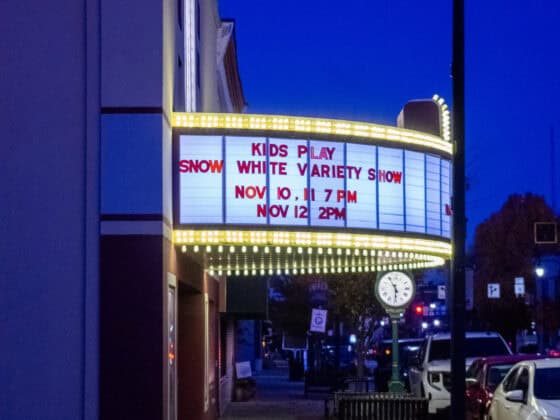story by ELIZABETH GRANGER
EXPERIENCE OLD-TIME OPULENCE WITH MODERN-DAY ENTERTAINMENT
Terri Hopkins has childhood memories of the Paramount Theatre in Anderson. Her cousins are part of those memories. “We’d go to watch the movies,” Hopkins said.
Their fifty-cents would cover the cost of the movie and snacks. The theater, she said, was beautiful. “We’d sit and look up at the lights that twinkled.” Those twinkling lights were part of the original design that was created to give the illusion of a Spanish courtyard at night, complete with wrought-iron gates, statues, and a ceiling painted like the sky with stars.
Those times didn’t last. Hopkins and her cousins grew up. The Paramount grew old. And in 1985 it closed. The wrecking ball loomed.
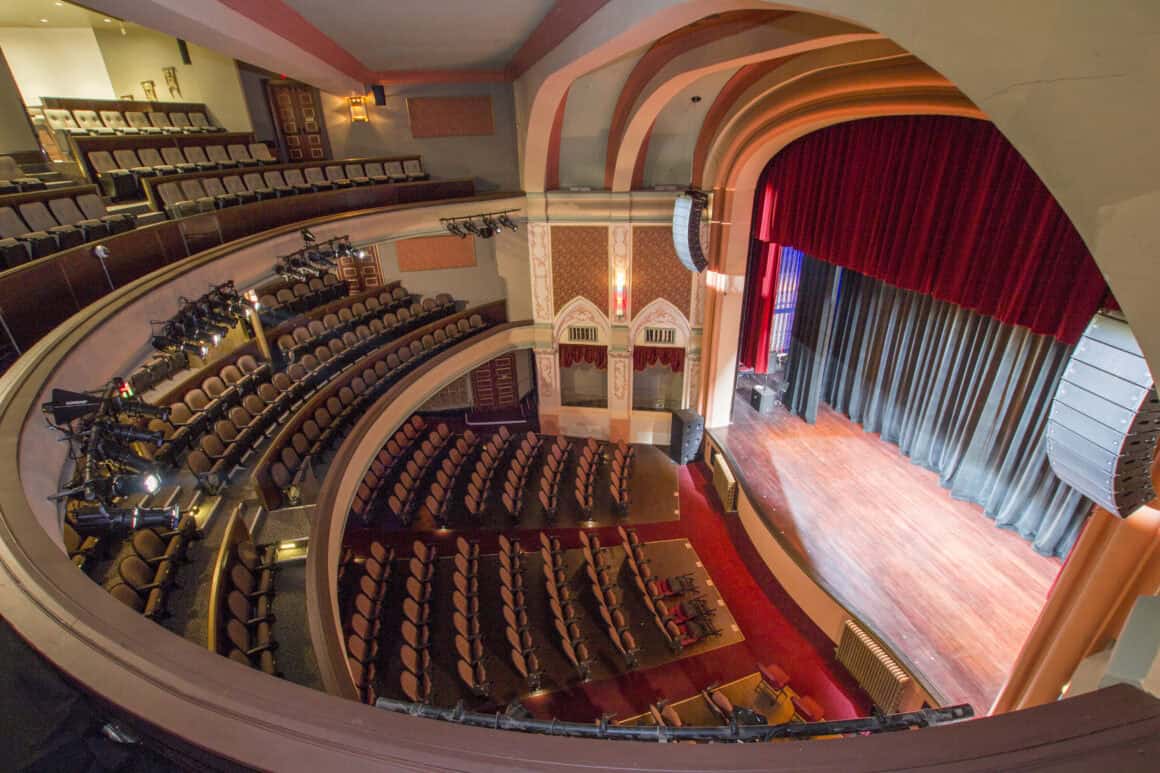
But the citizens of Anderson had other ideas. They created a not-for-profit and brought the Paramount back to life. The stars are shining again. “It’s amazing to see the changes now,” Hopkins said.
Renovation continues. A younger generation has been coming for the ballet, symphony, holiday specials, prom. And more recently, weddings. Guests often gasp when they enter, and they say, “I had no idea there was anything like this in Anderson.” They gasp again when they hear the enormous sounds of the Grande Page Pipe Organ, one of only three such organs in the country that remain in their original installation.
It’s a story unfolding throughout Indiana with remarkable theater restorations, including the Ritz in Rockville, Tivoli in Spencer, State in Logansport, Lerner in Elkhart, Artcraft in Franklin, Damm in Osgood, Gibson in Batesville, and Historic Ritz Cinema in Rensselaer. These theaters give visitors the opportunity to experience historic opulence while enjoying modern-day shows, events, movies, and more.

Mark Dollase, vice president of preservation services for Indiana Landmarks, said theaters often represent “that coming together that means so much to people.” He added, “If these places are important to you, find a way to get involved. They need your support.”
The Buskirk-Chumley Theater in Bloomington, originally known as the Indiana Theatre, is but one success. Built in the 1920s, it saw Hoagy Carmichael as a regular.
Bloomington raised more than $3 million for a restoration and the theater reopened in 1999.
“The theater has been here while so many other things have come and gone,” said marketing director Casey Rich. “Many have memories tied to this theater. It’s been a hub for the community.”

That sentiment gets repeated throughout the state. Consider the Delphi Opera House. While many of the restored theaters began their lives showing movies in the 1920s, the Delphi was born in 1865 with a dance in honor of soldiers returning from Civil War. The fire marshal condemned it in 1914. For more than 80 years it sat empty, and then the Delphi Preservation Society got involved. The outcome? A reopening in 2015 with the building reflecting some of its original grandeur. Several of the key wallpapers were faithfully reproduced for reinstallation in the grand hall. Faux paneling, window frames, and trim were all redone.
Near Lafayette you’ll find the Fowler Theatre, which has been restored in its Art Deco style. Built in 1940, this one- story building has maintained its original marquee and decorative elements.
Here you can watch first-run movies or participate in one of their special events.
The Times Theater in Rochester works because of volunteers, who initiate camaraderie. Folks will go to an event and continue to hang out in the lobby and chat.
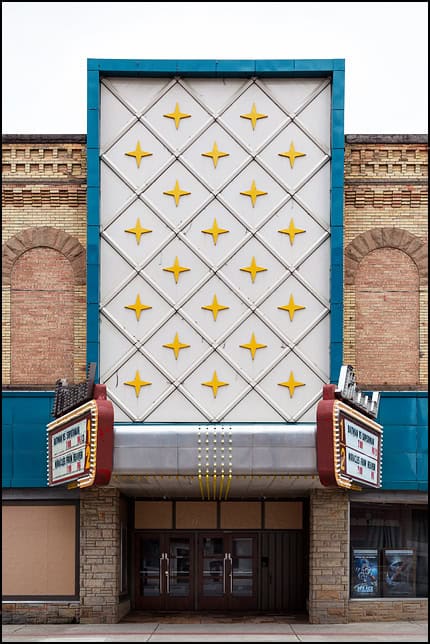
Check out the latest films at one of Indiana’s longest, continually operated theaters, in historic downtown Kendallville. The Strand Theatre, which opened in 1880, offers the comfort and nostalgia of the past but uses modern, digital equipment to present first-run movies. Another Strand Theatre, in Shelbyville, has been around since 1916 and serves as the community’s go-to for theater, comedy, and live music.
The 1920s Hoosier Theatre in Whiting experienced three fires and dwindling audiences; it faced demolition in the 1980s. The Hoosier Theater Foundation got the building added to the National Register of Historic Places. Friends of the Hoosier Theatre, a new non-profit, plans to transform the venue into a multi-use space in 2024. Today, visitors can watch new-release movies in an opulent, classic movie theater with curtained screen.
And then there’s the Richmond Civic Hall Performing Arts Center, which did not begin its life as a theater.
The center is in Richmond High School, which educates more than 1,500 students and also houses the Richmond Art Museum. The performing arts center was the gymnasium.
The community wanted this to be a collaboration with the schools,” said performing arts manager John Cook. “It’s a way of life here in Richmond, above and beyond the normal.”
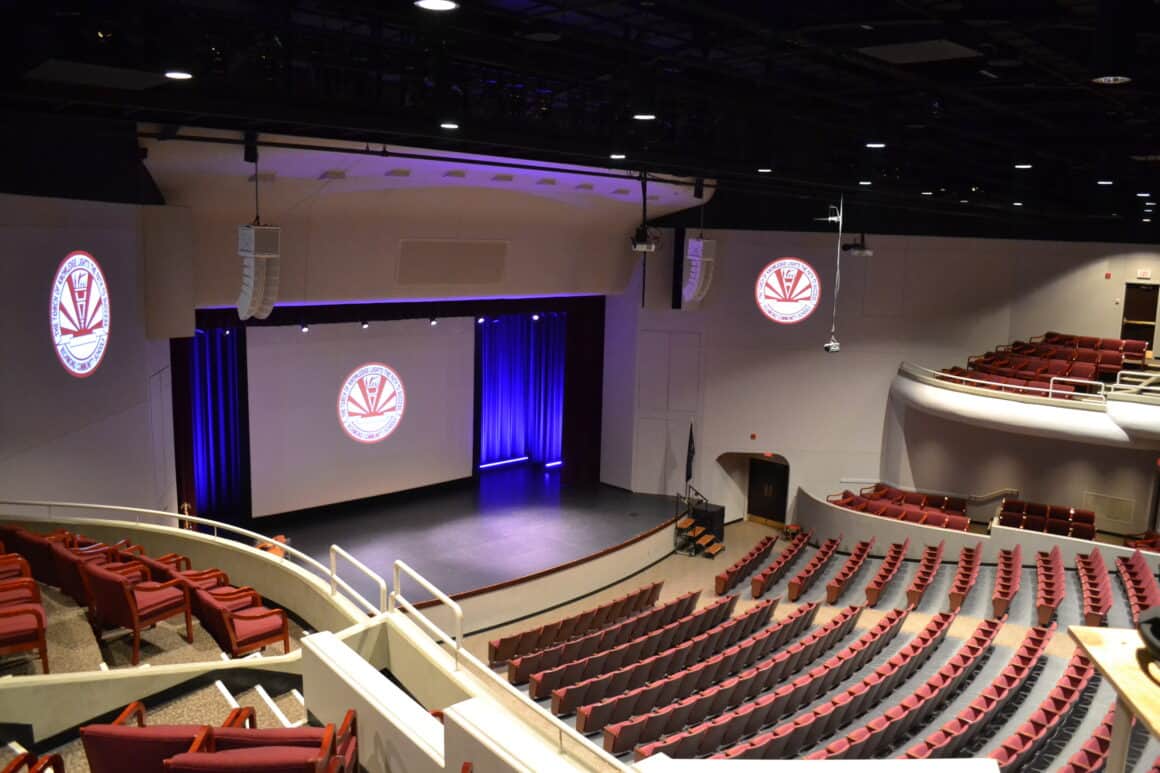
Landmark’s Dollase said it shows how the community of Richmond views the arts. “Making it an integral part of their kids’ education is important. As their kids move on into the world, they too will see the arts as being important to their lives.”
In Wabash you’ll find the recently- renovated 440-seat Eagles Theatre. Originally constructed in 1906, the five-story building houses a nostalgic theater for movies and live entertainment, an additional movie theater, music lesson rooms, recording studios, and a fully-restored grand ballroom.
The Memorial Opera House in Valparaiso was constructed in 1893 and originally served as a meeting place of the “Grand Army of the Republic,” a fraternal organization for veterans who served in the American Civil War. The interior boasts stained glass windows, along with ornate viewing boxes high above the stage. You can take tours, or take in one of their modern-day theatrical events.

Muncie’s Civic Theatre building is a Prohibition-era Vaudeville theater, and one of the oldest civic theaters in the country. The theater itself was founded in 1931 and provides high- quality entertainment performed by members of the community.
In downtown Jasper, the Astra Theatre has gone through a $1.7 million renovation which included replacing all major infrastructure, expanding the stage, and new sound and light system. Built in 1936, the Astra offers concerts, comedians, movies, and educational events.


